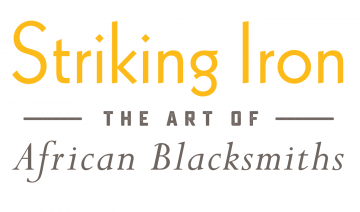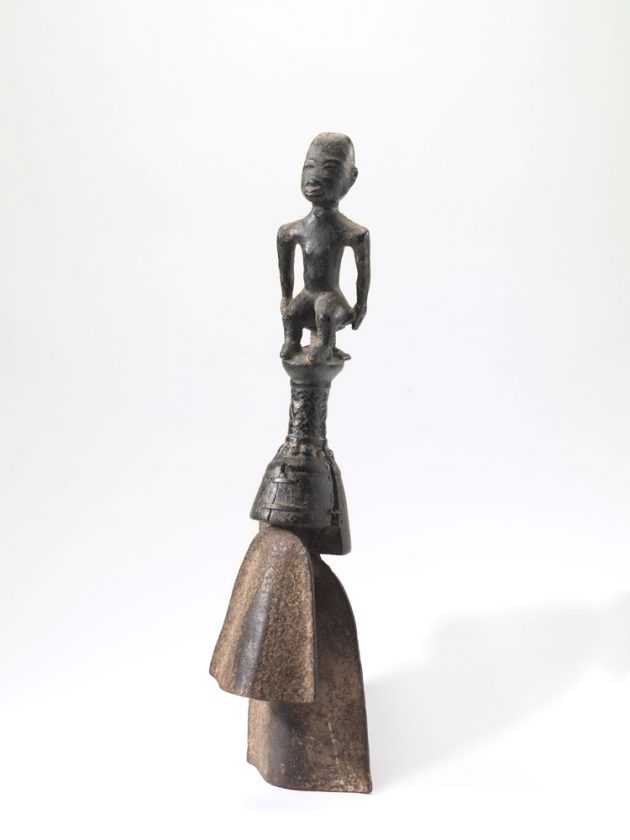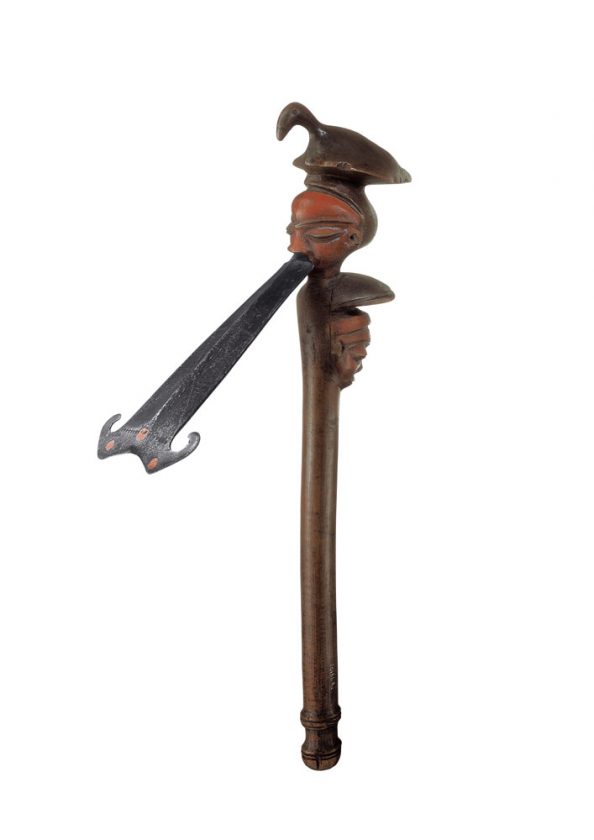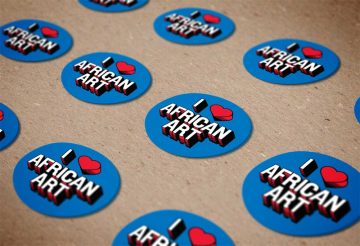 Striking Iron: The Art of African Blacksmiths focuses on the artistry of blacksmiths in Africa south of the Sahara and features works dating from the 17th century to recent times. More than 10 billion years ago, exploding stars and black holes in distant galaxies seeded the cosmos with iron. Some of it wound up here on earth—with us, around us, and in us.
Striking Iron: The Art of African Blacksmiths focuses on the artistry of blacksmiths in Africa south of the Sahara and features works dating from the 17th century to recent times. More than 10 billion years ago, exploding stars and black holes in distant galaxies seeded the cosmos with iron. Some of it wound up here on earth—with us, around us, and in us.
Iron is in the earth’s core and rocky crust. Iron is also in our blood, making it red. Like the fiery surface of the sun, embers glow fiercely in an African blacksmith’s hearth. The cadence of his hammer striking red-hot iron echoes the rhythm of the beating human heart as it steadily pumps iron-rich blood, keeping us alive.
Technologies of iron smelting and forging, which were first developed on the African continent roughly 2,500 years ago, require extraordinary innovation and sophistication. African smiths have transformed iron ore, one of earth’s most basic natural resources, into objects of utility, empowerment, prestige, ritual potency, and artistic expressiveness. The ability to create with iron is often understood as a divine gift, and those who effect its transformation are revered, and also feared, for their awesome capabilities.
In so many ways, blacksmiths have enhanced the values and meanings of iron in community life. The objects exhibited here demonstrate the smiths’ brilliance in working iron.

Active early 20th century, Ghana
Double bell (dawuro, nnawuta)
c. 1920
Iron, wood
Fowler Museum at UCLA, X87.1312, gift of Elizabeth Lloyd Davis
Sounding form. This Asante clapperless bell was often performed with drumming associations of warrior groups. It may also have been used to send messages. The specific timbres of such iron instruments and the distinctive rhythms made by striking them have culturally specific references and meanings. The renowned sculptor Kwaku Bempah carved the bell’s wood handle, enhancing its prestige and beauty that proclaimed the holder’s political and religious status.

Democratic Republic of the Congo
Adze
Early 20th century
Iron, wood, copper, pigment
Felix Collection
Eloquence in iron. This ceremonial adze, with its tonguelike iron blade, once dignified the left shoulder of a Pende chief who wore it as an emblem of high office when traveling. Never intended to carve wood, the adze represented smooth-cutting diplomacy, straight talk, and efficient negotiation. The bird at the top alludes to the chief’s bird’s-eye view, or oversight, of his domain. In contrast, the calm, masklike face from which the blade emerges is protected by another set of eyes, keeping watch behind him.
Striking Iron: The Art of African Blacksmiths is organized by the Fowler Museum at UCLA. The curatorial team is led by artist Tom Joyce, a MacArthur Fellow originally trained as a blacksmith, with co-curators Allen F. Roberts, UCLA Professor of World Arts and Cultures/Dance; Marla C. Berns, Shirley & Ralph Shapiro Director, Fowler Museum; William J. Dewey, Director, African Studies Program and Associate Professor of African Art History at Pennsylvania State University; and Henry J. Drewal, Evjue-Bascom Professor of Art History and Afro-American Studies at the University of Wisconsin–Madison.
Major funding for Striking Iron comes from the National Endowment for the Humanities and the National Endowment for the Arts. Generous support is also provided by the Fowler Museum’s Martha and Avrum Bluming Exhibition Fund.
The National Museum of African Art is grateful to Nancy and David Barbour, Nicole and John Dintenfass, Lydia Puccinelli Robbins, and members of the museum’s Advisory Board for their generous support of its presentation of Striking Iron: The Art of African Blacksmiths.


Share your encounters with us.
#StrikingIron
